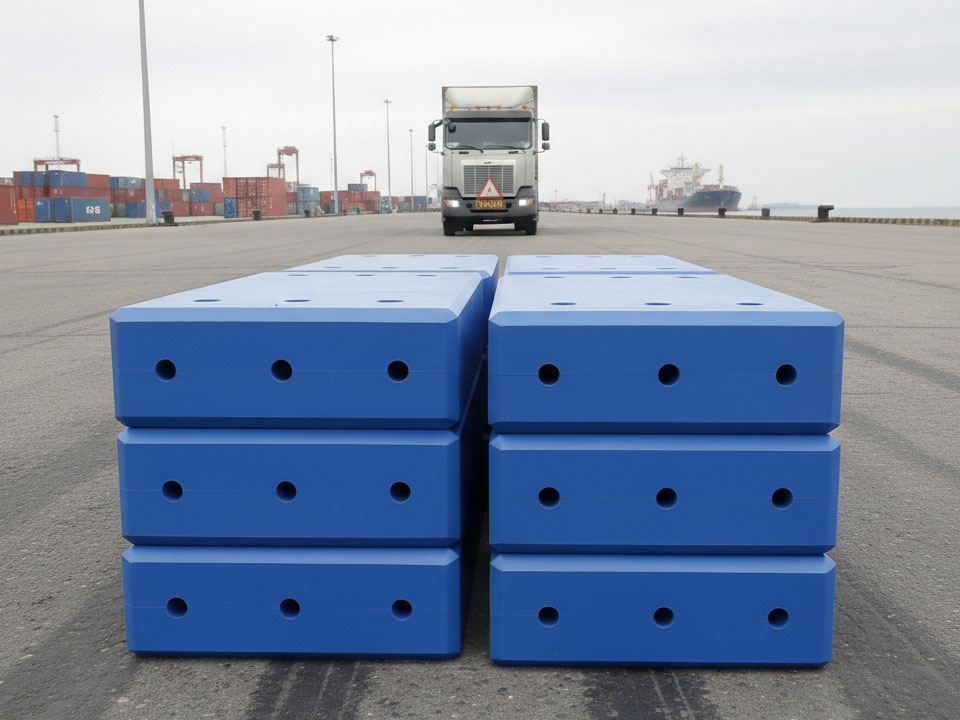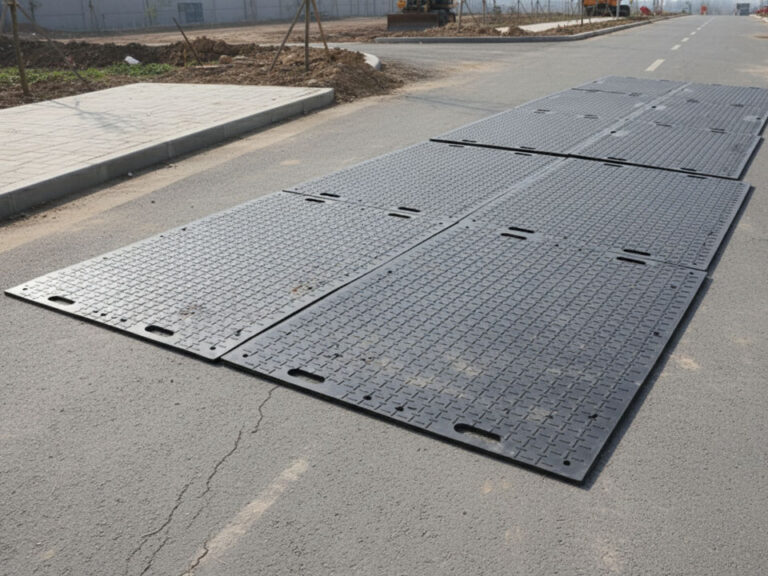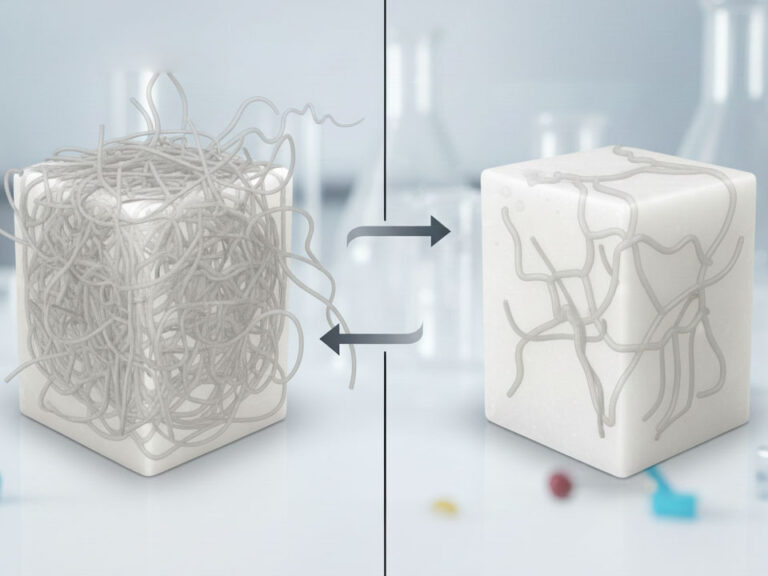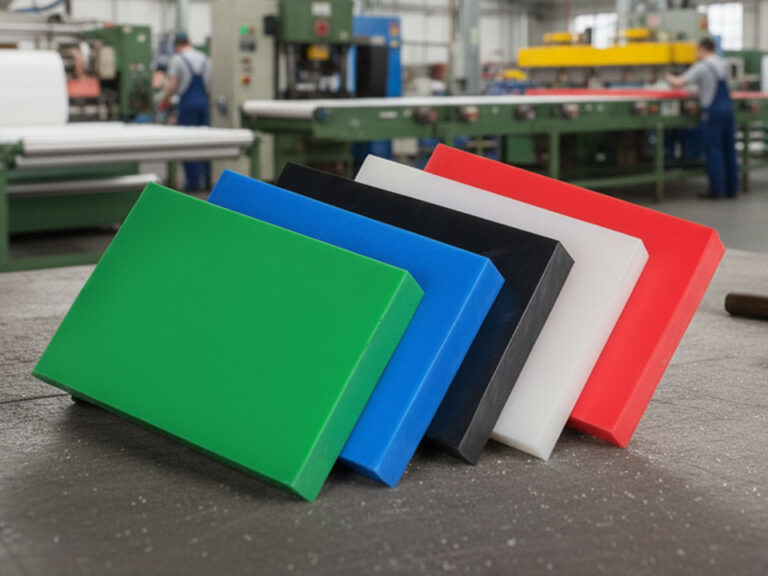-
Tian Dong Industrial Park, Decheng District Economic and Technological Development Zone, Dezhou City
The Ways of Customize UHMWPE Fender Pads
Summary
Customized UHMWPE Fender Pads are engineered protective components made from Ultra-High-Molecular-Weight Polyethylene (UHMWPE), known for their exceptional durability and versatility in marine applications. These fender pads are integral to safeguarding vessels and infrastructure from damage during docking and mooring operations, making them critical in the maritime industry. The unique properties of UHMWPE—such as high wear resistance, low friction, and robust impact strength—enhance the performance and lifespan of these pads, ultimately leading to cost efficiencies for marine operations.
Table of Contents
The customization of UHMWPE fender pads addresses specific operational needs, accommodating various sizes, shapes, hardness levels, and thicknesses to fit diverse marine environments. Tailored designs allow for optimal performance in unique docking conditions, thereby minimizing the risk of damage to both vessels and berthing structures. Companies often collaborate with manufacturers to produce bespoke solutions that meet the demands of specific projects, further solidifying the significance of customization in the industry.
Notable advancements in UHMWPE fender pad technology have led to significant improvements in marine performance, such as enhanced resistance to environmental degradation, including UV exposure and biofouling. Despite their benefits, the production and disposal of UHMWPE materials present environmental challenges, leading to discussions about sustainability and regulatory impacts within the industry. The integration of innovative features and improved recycling technologies is an ongoing area of research aimed at addressing these concerns while maintaining the operational advantages of UHMWPE fender pads.
In summary, customized UHMWPE fender pads play a vital role in modern marine operations by providing tailored solutions that enhance safety and efficiency. Their robust performance characteristics, combined with ongoing innovations and customization options, underscore their importance in protecting both vessels and marine infrastructure in a variety of challenging environments.

Properties of UHMWPE
Ultra-High-Molecular-Weight Polyethylene (UHMWPE) is recognized for its exceptional properties that make it a preferred material in a wide range of applications, particularly in industrial settings. The remarkable characteristics of UHMWPE are derived from its unique molecular structure, which consists of long polymer chains that impart durability and strength far superior to conventional polyethylene materials.
Key Characteristics
Wear and Abrasion Resistance
One of the standout features of UHMWPE is its exceptional wear resistance, which significantly prolongs the life of components made from this material. This property ensures that UHMWPE parts maintain their efficiency, reducing the need for frequent maintenance and replacement in applications such as conveyor belts and chute linings. The abrasion resistance of UHMWPE not only contributes to its longevity but also helps maintain the performance integrity of machinery operating under demanding conditions.
Low Coefficient of Friction
UHMWPE possesses a low coefficient of friction, making it an ideal choice for applications where sliding or moving parts interact. This property minimizes wear on both the UHMWPE component and the opposing surfaces, enhancing the longevity and reliability of machinery. The combination of low friction and high wear resistance positions UHMWPE as an optimal material for various industrial applications.
High Impact Strength
The high impact strength of UHMWPE allows it to withstand significant forces without cracking or breaking, making it suitable for use in applications that require resilience against impacts. This characteristic is particularly valuable in environments where materials are subject to heavy loads and potential shocks, further establishing UHMWPE as a preferred choice among engineers and designers.
Chemical Resistance
UHMWPE exhibits outstanding chemical resistance, allowing it to perform well in a wide range of corrosive environments. It is virtually unaffected by acids, alkalis, and organic solvents, making it suitable for use in industries such as food processing, pharmaceuticals, and chemical manufacturing. This property ensures that UHMWPE maintains its integrity and performance even in challenging chemical settings.
Thermal Stability
The thermal stability of UHMWPE, combined with its resistance to UV radiation and weathering, enhances its durability in outdoor applications. Black UHMWPE, in particular, offers improved weather resistance due to the incorporation of carbon black, making it suitable for use in various environmental conditions. This stability ensures that UHMWPE can be utilized in diverse applications without degrading over time.
Applications of UHMWPE Fender Pads
UHMWPE (Ultra-High Molecular Weight Polyethylene) fender pads are extensively utilized across various marine applications due to their exceptional mechanical properties and durability. These pads serve a critical role in protecting structures and vessels from damage during docking and mooring operations.
Marine Infrastructure
UHMWPE fender pads are commonly used in marine infrastructure projects, such as ports, harbors, terminals, and shipyards. They are effective in safeguarding quay walls, rub blocks, and other surfaces from wear and impact during vessel berthing. The low-friction and high-wear-resistant characteristics of these pads minimize surface damage, extending the life of both the fender systems and the vessels.
Offshore Operations
In offshore environments, UHMWPE fender pads are utilized on platforms and installations that require robust protection against harsh conditions. Their resistance to abrasion, impact, and corrosion makes them ideal for oil and gas platforms, as well as emerging offshore wind farms, which constitute a significant portion of the marine UHMWPE market. Furthermore, the material’s ability to withstand extreme temperature variations and exposure to oil, gas, and saltwater enhances its applicability in these demanding settings.
Ship and Vessel Protection
The application of UHMWPE fender pads is also prominent in maritime transportation. Shipping companies are increasingly adopting these components to reduce maintenance costs and extend service intervals. The material’s corrosion resistance and durability lead to operational cost savings estimated between 15-20% over a five-year service period compared to traditional materials. Additionally, the design of these pads facilitates smooth vessel movement alongside jetties and berths, thereby preventing damage to both the vessels and the dock infrastructure.
Customization for Specific Needs
Companies such as OLIPORTS offer customization options for UHMWPE fender pads, allowing for tailored solutions based on specific design loads, impact energies, and project requirements. This customization ensures that the fender pads can effectively handle the anticipated load cases, enhancing safety and performance.
Customization Options
Customization is a key feature of UHMWPE fender pads, allowing them to meet the specific requirements of various marine and industrial applications. These customization options can enhance performance and ensure the fender pads effectively address the unique challenges posed by different environments.
Material Variants
UHMWPE fender pads can be fabricated from various materials, including HDPE and UHMWPE, each offering distinct advantages in terms of durability, chemical resistance, and application suitability. For example, UHMWPE is particularly favored for its high wear resistance and low friction coefficient, making it ideal for high-impact environments like docks and marine structures.
Size and Shape Customization
Fender pads can be tailored to a wide range of sizes and shapes to fit specific configurations and structural needs. Customizable dimensions ensure that the fender pads can accommodate varying berthing angles, velocities, and local conditions, allowing for optimal performance in protecting vessels and dock infrastructure. The most commonly used size is the 4×8 UHMW-PE sheet, which offers a large surface area for versatile machining and fabrication options.
Hardness and Thickness Options
Customization also extends to the hardness and thickness of UHMWPE sheets, with options ranging from 6mm to 300mm. This flexibility in thickness allows for the selection of fender pads that can handle different loads and stresses without compromising performance. For instance, thinner sheets may be used in low-impact applications, while thicker variants are better suited for high-load scenarios.
Custom Machining Techniques
To achieve precise specifications, various machining techniques are employed, allowing for the production of complex shapes and tight tolerances. The use of advanced cutting tools and techniques ensures a smooth finish and durability of the machined components. Custom fabrication options enable the creation of parts that fit seamlessly within the overall fender system design, enhancing both performance and longevity.
Manufacturing Process
The manufacturing process of customized UHMW-PE fender pads involves several key steps, each critical to ensuring the final product meets specific performance and quality standards.
Material Preparation
Before machining begins, large sheets of UHMW-PE (Ultra-High Molecular Weight Polyethylene) are cut into smaller, manageable pieces. This initial cutting is vital for minimizing waste and optimizing material use, allowing for efficient handling during subsequent manufacturing stages.
Cutting and Shaping
CNC Machining
CNC (Computer Numerical Control) machining is the primary method used for fabricating custom UHMW-PE fender pads. This process employs computer-controlled tools to achieve precise cuts and shapes as per detailed CAD (Computer-Aided Design) blueprints. CNC machining ensures high precision and repeatability, enabling the production of intricate shapes and complex geometries essential for effective fender pad functionality.
Laser Cutting
In addition to CNC machining, laser cutting techniques are employed to create detailed and precise cuts in UHMW-PE sheets. This method is particularly beneficial for applications requiring intricate designs and sharp edges, providing clean and accurate cuts that enhance the performance of the fender pads.
Finishing Techniques
Once the parts are shaped, various finishing techniques are applied to enhance their surface quality and overall performance.
Sanding and Polishing: This process smooths the surface and removes any rough edges or tool marks, ensuring a high-quality finish. Deburring: Sharp edges and burrs that can result from machining are eliminated to ensure safe handling and assembly. Annealing: A heat treatment process that reduces internal stresses, enhancing the dimensional stability of the fender pads.
Quality Control
Throughout the manufacturing process, stringent quality control measures are implemented.
Dimensional Inspections: Precise measuring tools verify that each part conforms to specified dimensions and tolerances. Surface Finish Checks: Ensuring the surface quality meets necessary criteria is crucial for smooth operation and longevity.
Assembly and Final Inspection
If required, the final stage involves assembling the machined fender pads and conducting a comprehensive inspection. This step ensures that all components fit together correctly and function as intended, which is particularly critical when multiple fender pads are used in conjunction with each other or with parts made from other materials.
This meticulous attention to detail throughout the manufacturing process guarantees that customized UHMW-PE fender pads deliver exceptional performance and durability in their intended applications.
Benefits of Customization
Customization of UHMWPE fender pads provides numerous advantages that enhance performance, durability, and overall efficiency in various applications. Tailoring these fender pads to meet specific project requirements not only ensures compatibility with unique environmental conditions but also optimizes their functional attributes.
Enhanced Performance and Longevity
Customized UHMWPE fender pads are designed to meet the specific demands of their operational environments. The material’s intrinsic properties, such as low friction and high durability, ensure that tailored fender pads can withstand harsh marine conditions while maintaining their performance over time. This customization contributes to an extended lifespan of the fender systems, thereby reducing the need for frequent replacements and repairs.
Optimal Fit for Unique Applications
Every port or marine structure has distinct characteristics that may require different fender sizes, shapes, and configurations. Customizing fender pads allows for a precise fit to the structural dimensions and operational requirements of each site. This tailored approach not only improves the functionality of the fender systems but also enhances the safety and efficiency of marine operations by minimizing the risk of damage to vessels and berths during docking and mooring.
Cost Efficiency
Investing in customized UHMWPE fender pads can lead to significant cost savings over time. By ensuring a perfect fit and optimal performance, the risk of damage during operations is minimized, which translates to lower maintenance costs and reduced liability claims. Furthermore, the longevity of customized fender pads means that the initial investment yields a higher return by decreasing the frequency of replacements and repairs.
Environmental Adaptability
The customization process also allows designers to incorporate site-specific information, such as local building codes and environmental factors, into the fender pad design. This adaptability ensures that the fender pads are not only efficient but also sustainable, reducing their environmental footprint while complying with regulatory standards.
Innovative Solutions
Customization facilitates the integration of innovative features, such as enhanced chemical resistance and UV protection, tailored to the specific needs of the application. This is particularly beneficial for fender pads used in varying climates or harsh environments, ensuring they retain their effectiveness and integrity over time.
Case Studies
Cost Savings through UHMW-PE Implementation
Numerous case studies highlight the effectiveness of customized UHMW-PE (Ultra High Molecular Weight Polyethylene) fender pads in various applications, demonstrating significant cost savings and enhanced operational efficiency. A notable example involves a large food processing company that replaced traditional metal bearings with UHMW-PE bearings in their conveyor systems. This transition resulted in a remarkable 30% reduction in downtime, attributed to the lower maintenance requirements of the UHMW-PE components, which are more resistant to the cleaning agents commonly used in food processing environments.
Performance Improvement in Marine Applications
In marine environments, the application of UHMW-PE fender pads has also led to substantial improvements in performance and longevity. The pads’ durability and resistance to abrasion enhance their effectiveness as protective barriers for vessels docking at berths. Custom designs tailored to specific vessel and docking conditions can further optimize energy absorption and reduce the potential for structural damage during mooring operations. By integrating UHMW-PE fender pads into their systems, operators have reported extended service life and reduced replacement frequency, which collectively contribute to lower operational costs and enhanced safety.
Enhanced Reliability through Customization
The customization of UHMW-PE fender pads allows for precise engineering tailored to unique marine and industrial conditions. For example, projects that have considered specific load cases—such as cyclic and constant loads—have demonstrated improved performance metrics. These custom-designed fender pads have been tested under controlled conditions, ensuring that they meet or exceed the necessary standards for durability and safety. As a result, stakeholders have experienced not only compliance with industry standards but also greater assurance in the reliability of their fender systems, thus mitigating risks associated with marine operations.
Environmental Challenges and Solutions
The use of Ultra-High Molecular Weight Polyethylene (UHMWPE) in marine applications faces significant environmental challenges due to the harsh marine environment. These challenges include constant exposure to saltwater, varying temperatures, UV radiation, and biological organisms, all of which contribute to material degradation through mechanisms such as water uptake, biofouling, and fatigue.
Water Uptake and Dimensional Stability
One of the primary concerns for UHMWPE in marine settings is its resistance to water absorption, which can lead to dimensional instability and diminished mechanical properties. Recent technological advancements have focused on enhancing UHMWPE’s performance through surface modifications and composite formulations to mitigate water uptake issues.
Biofouling and Operational Efficiency
Biofouling poses another critical challenge, as it can increase drag and weight, thereby elevating maintenance costs for marine structures. The development of anti-biofouling variants of UHMWPE represents a significant advancement in addressing this issue, promoting efficiency and longevity in marine applications.
Energy and Lifecycle Considerations
Energy consumption during the production of UHMWPE is a notable environmental concern, contributing to greenhouse gas emissions. However, its lightweight characteristics can reduce fuel consumption in marine vessels where it replaces heavier materials, potentially balancing the initial environmental impacts through enhanced operational efficiencies.
End-of-Life Management
The end-of-life management of UHMWPE materials remains a significant sustainability challenge. Current recycling infrastructures struggle to handle UHMWPE waste, particularly when contaminated with marine growth or mixed with other materials. Innovative recycling technologies, including chemical recycling and thermal depolymerization, show promise but are not yet commercially widespread.
Regulatory Impacts
Recent global regulatory developments aimed at reducing plastic pollution in marine environments may also affect the use of UHMWPE. New frameworks such as extended producer responsibility and plastic taxes, along with potential bans on certain single-use plastics, indicate a shifting regulatory landscape that could impact the use of durable plastics, including UHMWPE, in marine components.
Material Innovations
Innovations in UHMWPE, such as the incorporation of UV stabilizers like carbon black, enhance its resistance to UV radiation, making it particularly suitable for outdoor and marine applications. Furthermore, black UHMW-PE’s exceptional resistance to saltwater corrosion ensures its longevity and reliability in marine construction, reducing the need for frequent maintenance and replacements.



